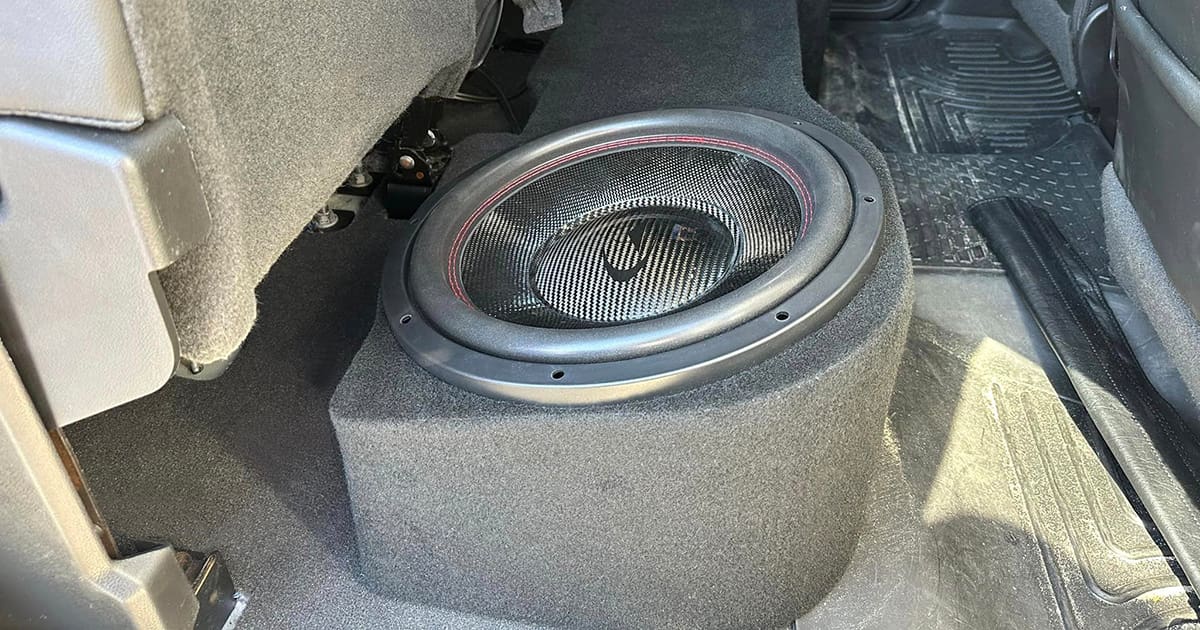Over the last decade, the popularity of under-seat truck subwoofer upgrades has exploded. At least a dozen companies offer vehicle-specific solutions with shallow-mount subwoofers to add bass to these vehicles. If you’re perusing the enclosure options for your truck, you’ll notice two distinct options: enclosures with drivers that face upward into the seat bottom and those that face down into the floor. Is one design better than the other? Let’s discuss.
Truck Subwoofer Enclosures
Before we dive into the potential differences between up- and down-firing truck enclosures, let’s talk about the purpose of an enclosure. First and foremost, a subwoofer enclosure separates the sound coming from the back of the cone from the sound coming from the front. If you took a subwoofer out of its shipping carton and held it in your hand while playing music, you’d find it produces no bass. The lack of output is because the sounds coming from the front and back of the cone cancel each other out. When we put a subwoofer in an enclosure, it traps the sound coming from the back of the cone, and we only hear it from the front.
The second purpose of a subwoofer enclosure is to act as a high-pass filter to limit subwoofer cone excursion at very low frequencies. Without an enclosure, driver damage is possible with even moderate amounts of power. The air in the enclosure changes the compliance of the subwoofer suspension. More accurately, it makes it harder for the cone to move. Yes, this does seem counterproductive. Subwoofers need an enclosure to play 35 to 65 hertz loudly while remaining controlled at lower frequencies. Getting the enclosure design right is very important to the performance of the subwoofer system.
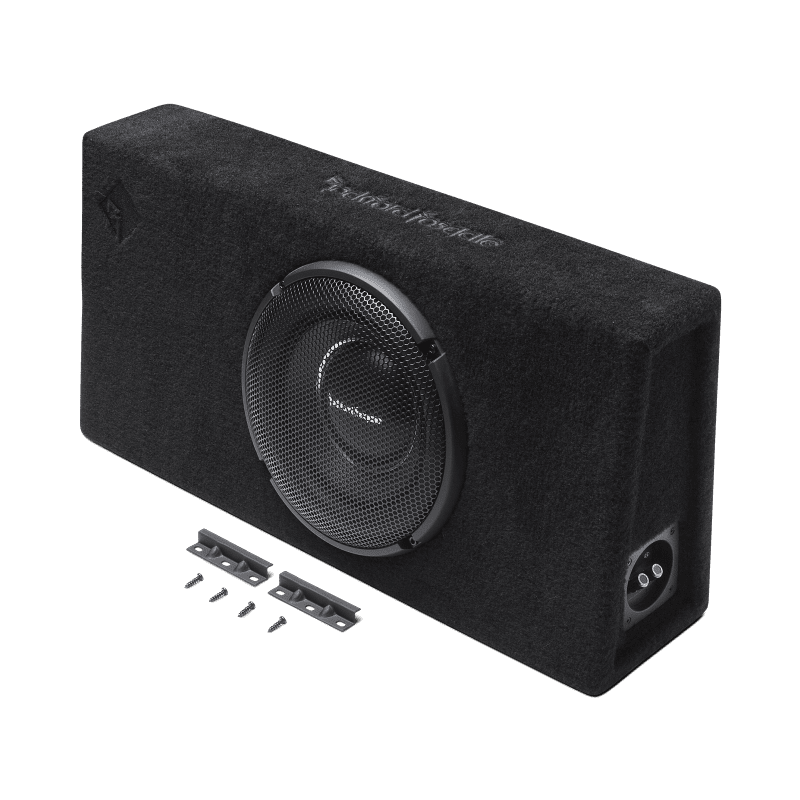
Down-Firing Subwoofer Enclosures
Down-firing subwoofer enclosure designs that aim the subwoofer into the floor are not new. There are many myths about down-firing subwoofers, though. Theories about low-frequency information reinforcement and “tightness” changes are prevalent. At extreme excursion levels, the proximity to the floor might result in a small amount of pressure pushing back on the cone. The closer to the floor the subwoofer is, the more this is a possibility. Yet it won’t significantly affect performance.
If you’ve read the BestCarAudio.com series of articles on Understanding Subwoofer Quality, you know that all subwoofers (and speakers) add moderate amounts of harmonic distortion to the signals they produce. These harmonics are typically second- and third-order, so twice and three times the fundamental frequencies. If a subwoofer plays a 50 hertz tone, the second harmonic is 100 hertz, and the third is 200 hertz. One benefit of firing a subwoofer down into the floor is that these higher frequencies might be somewhat attenuated. The attenuation amount depends on the floor’s proximity and the materials under the subwoofer (carpet, etc.).
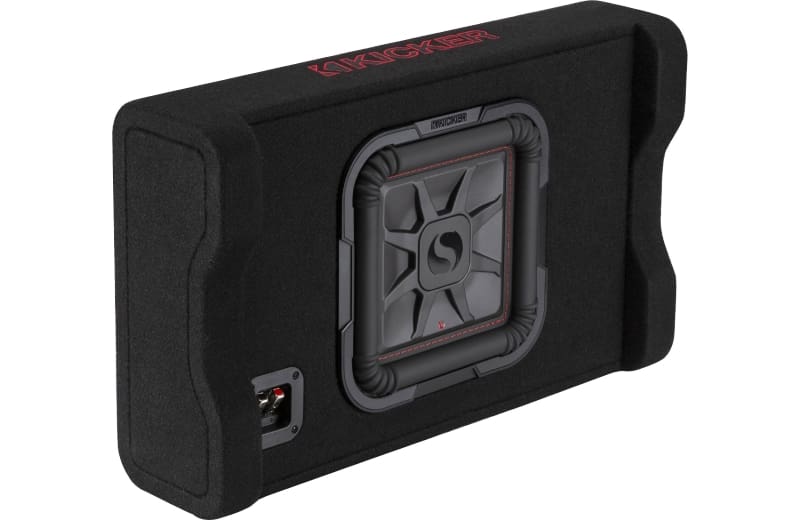
Up-Firing Truck Subwoofer Enclosures
With an up-firing enclosure, we have a seat cushion to filter higher-frequency harmonic content. The difference between up- and down-firing subwoofer enclosures might not vary significantly in this context.
With a down-firing enclosure, the designer must provide adequate space between the subwoofer and floor to ensure that the cone and surround will never touch anything. There should also be sufficient space so that the sound produced by the subwoofer can escape into the vehicle. These criteria might result in the subwoofer being 1.5 to 2 inches off the floor. The drawback here is that this wastes some enclosure volume.
If the subwoofers are firing upward into a seat cushion, a grille over the subwoofer will allow the seat to sit directly on top of the driver. Bass frequencies can pass through the seat cushion with minimal obstruction.
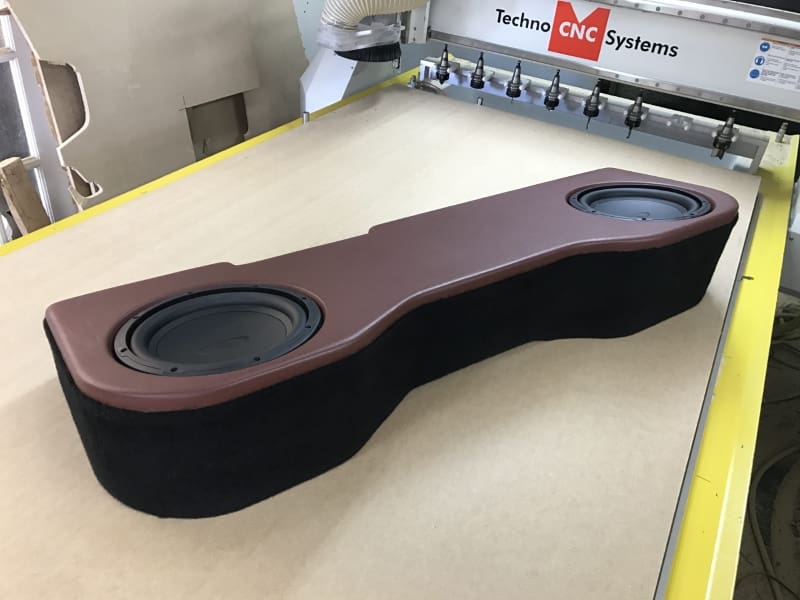
If you’re shopping for a subwoofer enclosure for your truck, ask the product specialist you’re working with about the enclosure volumes. The number one issue with truck enclosures is volume. Most of them are too small, which results in boomy and sloppy bass reproduction. Choose the enclosure that has the most internal air volume.
But Wait, There’s More!
In researching this article, I read a few dozen discussions about down- and forward-firing home theater subwoofer enclosures. A common issue repeatedly demonstrated a misunderstanding in system design and calibration. There were many comments about how a subwoofer blended better with the main speakers firing backward into a wall versus out into the room. People had taken measurements with Room EQ Wizard to further the matter to corroborate their observations.
Of course there will be a difference! The subwoofer and the midbass speakers must be in phase at the crossover power for the transition to be smooth. Turning a home theater sub around without changing settings will reverse the effective acoustic polarity. Unless you’re unlucky and your sub is 90 degrees out of phase with the main speakers, one direction will work better than the other. Most home theater subwoofers have a polarity control switch on the amplifier panel. Better units will have a phase control knob.
What’s the takeaway from this second consideration? System calibration is crucial to getting the most from your car audio system. If you don’t have a digital signal processor (even though you should), then the technician installing the system should focus on speaker polarity and levels to produce the smoothest response possible. If you have a DSP, getting the phase between the subwoofers and the rest of the speakers right is crucial. This alignment can be fine-tuned with polarity and delay adjustments. When appropriately configured, and you have high-quality speakers and subwoofers that don’t add a lot of distortion, the bass will seem to come from the front of the vehicle. Midbass frequencies will be tight and dynamic with fantastic impact.
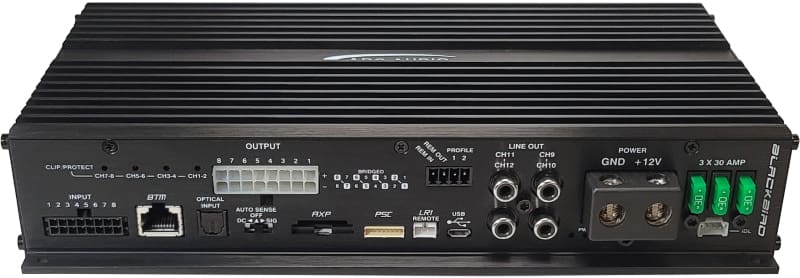
Should I Choose an Up- or Down-Firing Truck Subwoofer Enclosure?
The final answer to choosing an up- or down-firing truck subwoofer enclosure is to select the solution that allows the subwoofers to sound their best. In most cases, this will mean going with an enclosure that offers the largest volume to reduce unwanted resonance. You may want to read the BestCarAudio.com article about enclosure stuffing to reduce resonance in sealed subwoofer enclosures. Having your installer pack the enclosure with Dacron or something similar might offer a significant improvement in sound quality.
